This rare leucistic green sea turtle was discovered among nests, supported by local conservation efforts, in Papua New Guinea’s Conflict Islands.
Jake Wilton
From Smithsonian by Samuel SandersThe winning and highly commended underwater photography spotlights
breathtaking animal behavior, conservation needs and the otherworldly
environment of Earth’s oceans
The vastness of the ocean evokes both wonder and mystery.
And for centuries, photographers have been trying to capture its essence.
Since the first underwater photography began
in 1856, technology has evolved to allow divers to take breathtaking images that bring to life this unique ecosystem.
The Ocean Photographer of the Year Contest, presented by Oceanographic Magazine and Blancpain, channels the passion of ocean photographers into a yearly competition.
The contest has a simple mission: “To shine a light on the wonder and fragility of our blue planet and celebrate the photographers giving it a voice.”
This year, photographers from around the globe submitted more than 15,000 coastal, drone and underwater images to the contest.
The shots fell into seven categories: wildlife, fine art, adventure, conservation impact, conservation hope, human connection and young photographer.
The competition awards an overall winner—the Ocean Photographer of the Year—in addition to category winners, the Ocean Portfolio Award honoring a photographer’s collection of work and the Female Fifty Fathom Award, which celebrates a boundary-pushing woman in ocean photography.
Winners of the 2024 contest were announced September 12, and the recognized photographs include dramatic wildlife encounters, beautiful examples of humans’ connection with the ocean and stark reminders of society’s impact on the marine environment.
The image winners will go on exhibition at the
Australian National Maritime Museum in Sydney, Australia, on November 28, followed by several yet-to-be-announced venues in early 2025.
Below are the stunning images awarded in this year’s contest, as well as a selection of finalists that also wowed the judges.
Overall Winner, Rafael Fernández Caballero
A Bryde’s whale opens its mouth, about to devour a heart-shaped bait ball in Baja California Sur, Mexico.
Rafael Fernández Caballero
The overall winning image shows a Bryde’s whale about to devour a bait ball—a last-ditch defensive measure that occurs when fish swarm together and pack tightly, typically performed by small schooling fish when they feel threatened by predators.
In the photo, light shines through the water.
Research suggests Bryde’s whales spend most of the day within 50 feet of the water’s surface.
While this school of fish may seem like a hearty snack, Bryde’s whales eat an estimated 1,320 to 1,450 pounds of food daily—so this whale likely fed again shortly after.
“The image captures perhaps the most special—and craziest—moment of my life,” says photographer
Rafael Fernández Caballero in a statement.
“It fills me with joy having lived this moment—and to have captured the image.”
Female Fifty Fathoms Award Winner, Ipah Uid Lynn
A tiny goby perches on a delicate sea whip, surrounded by colors at Romblon Island in the Philippines.
Ipah Uid Lynn
Ipah Uid Lynn, a Malaysian photographer, took home the Female Fifty Fathoms Award with her body of work that featured this colorful image of a goby.
This award works differently than the others.
Instead of submitting photos, the recipient is nominated by her peers and judged by a special panel.
“It’s a recognition that goes beyond personal achievement,” Lynn says in a statement.
“It highlights the importance of storytelling through photography and the voices of women in this field.”
This vibrant photograph highlights the beauty of small creatures in the ocean.
It depicts a goby resting on a
sea whip, a type of soft coral.
Sea whips can grow to two feet in total height, making this a spectacular close-up capture.
Portfolio Award Winner, Shane Gross
/https://tf-cmsv2-smithsonianmag-media.s3.amazonaws.com/filer_public/52/66/5266af49-636c-4b0a-8cfe-5d553bd4125f/1.jpeg) Baby plainfin midshipman fish, still attached to their yolk sacs.
Baby plainfin midshipman fish, still attached to their yolk sacs. Shane Gross
Canadian photographer
Shane Gross encountered this group of baby plainfin midshipman fish still attached to their yolk sacs in British Columbia, Canada.
For these fish, it’s the males that provide parental care.
While the plainfin midshipman is known to be a deep-sea marine fish, it transcends habitats during the breeding season in summer and
migrates to the fluctuating intertidal zone.
As the tide moves in and out, the fish face changing temperatures and oxygen levels.
While the fish might swim in comfortable cold water in the morning, their rocks could be completely exposed to air in the afternoon.
Despite this stressful environment, the male midshipman remains to care for his young.
The babies “are guarded over by their father until they are big enough to swim … to ocean depths,” Gross says in a
statement.
Human Connection Winner, Zhang Xiang
A beach reflects the golden haze of the sunset while a traditional fisher wades through the water in Fujian, China.
Zhang Xiang
A traditional Chinese fisher traverses a beach as the sunset’s golden haze is reflected by the sand and water.
China is the world’s
largest seafood producer and exporter, accounting for about 35 percent of global production.
The sea around China contains
3,000 marine species, of which more than 100 are fished commercially, including mackerel, anchovy, shrimp and crab.
Here, the beauty of the landscape brings another economic value to the area in Fujian province.
“The gorgeous sight attracts many tourists, bringing income to local people,” photographer Zhang Xiang says in a
statement.
Adventure Winner, Tobias Friedrich
A scuba diver is dwarfed by a shipwreck in the Bahamas.
Tobias Friedrich
The photo above was a surprise find for German photographer
Tobias Friedrich.
“We were on a liveaboard cruise to take underwater images of tiger and hammerhead sharks,” he says in a
statement.
“But due to bad weather conditions, we had to seek shelter and look for alternative dive sites.
We decided to dive on this wreck … At that time, the sand under the bow was washed out, which made it an excellent photographic opportunity.”
The region surrounding the
Grand Bahama has 176 shipwrecks, according to an analysis of historical records done last year.
The ship pictured above was intentionally sunken by a dive center.
Known as scuttling, this practice of purposefully sinking ships has grown; it can produce dive training sites and increase revenue options for dive centers.
However, some scuttling has also been done for
ecological reasons, helping to create new artificial reef sites for fish.
Conservation (Hope) Winner, Shane Gross
A green sea turtle is released by a researcher after being accidentally captured while trying to catch sharks.
Shane Gross
This green sea turtle was accidentally caught by researchers when they were trying to find sharks.
Here, the creature is returned to the ocean after a researcher untangled it from the net, took measurements and tagged the turtle for conservation purposes.
Tagging an animal is a crucial way for scientists understand and learn about its species.
The practice could help researchers understand migratory patterns,
lifespan and how the species spends time.
Shane Gross, who snapped the photo,
remarks on the future of the tagged green sea turtle: “She is now an ambassador for her species.”
The
green sea turtle is the largest hard-shelled sea turtle.
As herbivores, the animals’ diet of seagrasses and algae
gives their fat a greenish color.
Green sea turtles can be found worldwide, nesting in more than 80 countries and swimming in the coastal areas of more than 140 countries.
Conservation (Impact) Winner, Frederik Brogaard
A fin whale, the second-biggest whale species on Earth, at a whaling plant in Iceland.
Frederik Brogaard
For the 2024 hunting season, Iceland made the controversial decision to distribute a
license to a whaling company for the hunting of fin whales.
Above, a dead fin whale waits to get butchered at a whaling plant before being sent to Japan.
“The picture might induce a feeling of hopelessness, but public uproar throughout the last two years has resulted in the cancellation of last year’s whaling season in Iceland.
Unfortunately, a whaling quota was again issued this year,” says
Frederik Brogaard, the Denmark-based photographer who captured this image, in a
statement.
“I hope this picture raises awareness and serves as an inspiration to keep the public pressure on.
These whales are crucial in our fight against climate change, sequestering tonnes of CO2 in their lifetime, and are worth more to us alive than dead.”
Young Ocean Photographer Winner, Jacob Guy
An elusive algae octopus shows off its fluorescence under ultraviolet light in North Sulawesi, Indonesia.
Jacob Guy
The algae octopus is elusive.
“Normally coming out to hunt at dusk, with incredible camouflage, these creatures blend seamlessly into the reef—until they are viewed under a different light,” says photographer
Jacob Guy of the United Kingdom in a
statement.
He spotted this individual off of North Sulawesi, Indonesia.
“On my last dive of the trip, I got lucky and found one of these beautiful creatures on the hunt for a meal and managed to capture the intense look from its yellow eyes.”
Under ultraviolet light, the algae octopus has an uncommon ability—it
glowswith fluorescence, absorbing the light to emit it at visible wavelengths.
But in its resting camouflage state, the animal looks like a shell overgrown with algae—which is how it gets its name.
When an algae octopus is hungry, you may find it in an unexpected place: on land.
It can
move between tidal pools on a beach when hunting for crabs.
Fine Art Winner, Henley Spiers
/https://tf-cmsv2-smithsonianmag-media.s3.amazonaws.com/filer_public/23/09/2309cd85-abfd-4379-abfc-54eca2b76160/1_-_henley_spiers_1c.jpeg) Juvenile Munk’s devil rays are attracted by a green light on a boat, seemingly flying through the water in the Sea of Cortez, Baja California Sur, Mexico.
Juvenile Munk’s devil rays are attracted by a green light on a boat, seemingly flying through the water in the Sea of Cortez, Baja California Sur, Mexico. Henley Spiers
Munk’s devil rays, like the ones above, are found in tropical oceanic waters of the eastern Pacific Ocean.
Munk’s devil rays are quite acrobatic.
They can leap out of the water, either alone or in groups, performing vertical jumps and somersaults.
They mainly
feed on opossum shrimp and zooplankton but can also eat small fish.
The rays are known to form enormous congregations when feeding, resting or—in
at least one instance—mating.
Henley Spiers of the U.K.
describes in a
statement how he captured the photo: “At night, we hung a green light from the back of our boat.
As plankton gathered around it, the mobula rays gratefully swooped in for a microscopic buffet.
The rays seem to fly through the water as they pursue their dinner.
Entranced by their glance, I used a two-second exposure to capture their movements, which, to my eye, felt like an aquatic ballet.”
Wildlife Winner, Manuel Castellanos Raboso
A mahi-mahi, also called a common dolphinfish, proudly displays its catch amidst a feeding frenzy.
Manuel Castellanos Raboso
A sunlit mahi-mahi enjoys its catch from the bait ball behind it in Baja California Sur, Mexico.
The large fish, which can grow to seven feet long, eat a
variety of species, including small pelagic fish, juvenile tuna and invertebrates.
Mahi-mahi can reproduce at a relatively young age, as early as four to five months old, and their productivity is one reason why scientists assume the mahi-mahi population is stable.
“Its vibrant yellow and green hues shimmer brilliantly under the refracted sunlight against the stunning blue of the Pacific Ocean,” Spanish photographer
Manuel Castellanos Raboso says in a
statement.
“[The mahi-mahi were] moving like torpedoes in front of us.
This scene captures the hunt and the energy of the Baja’s marine life.”
Finalist, Jake Wilton
This rare leucistic green sea turtle was discovered among nests, supported by local conservation efforts, in Papua New Guinea’s Conflict Islands.
Jake Wilton
Typical sea turtles have deep green coloring, but the individual above has a rare condition: leucism.
An animal with
leucism experiences a partial loss of pigmentation.
This often leads to white coloration in splotches on the animal’s skin or fur.
Leucism is not exclusive to turtles; it can be found in horses, cows, cats, dogs,
crocodiles,
penguins and other species.
Notice the dark color of the turtle’s eyes in the photo—this is one trait that distinguishes leucism from
albinism, since leucism does not affect the eyes’ pigmentation.
Albino animals, on the other hand, have
pink, red or light blue eyes.
For Australian photographer
Jake Wilton, hitting the shutter with just the right timing was critical to achieving this shot.
“Using the surface of the calm water, I captured the striking reflection of the hatchling as it surfaced for air,” Wilton says in a
statement.
In Papua New Guinea’s Conflict Islands, conservation efforts have boosted the numbers of turtle hatchlings.
The discovery of this rare leucistic turtle, Wilton adds, “is a testament to the successful turnaround in conservation efforts and the beauty of these endangered creatures.”
Finalist, Filippo Borghi
One of the Southern Ocean’s most formidable predators, the leopard seal, approaches the camera with its mouth wide open.
Filippo Borghi
“In the frigid waters of the Southern Ocean, just off the coast of Antarctica, I had the opportunity to capture a breathtaking encounter with one of the region’s most formidable predators—the leopard seal,” says Italian photographer
Filippo Borghi in a
statement.
The leopard seal, sometimes referred to as a sea leopard, is the
second-largest species of seal in the Antarctic, behind the
southern elephant seal.
Its only natural predator is an orca.
Sea leopards feed on fish, squid, small crustaceans, penguins, smaller seals and even whale carcasses.
Borghi describes his nerves the moment he got the shot.
“I held my breath, my heart racing with a mixture of awe and trepidation, as the seal approached, its spotted coat and powerful jaws seeming suspended in the crystalline waters,” he adds.
“[Its] dark eyes were fixed on mine.”
Finalist, Daisuke Kurashima
diver swims through colorful waters off Iwo Jima.
Daisuke Kurashima
Iwo Jima is one of the
Japanese Volcano Islands, a group of three islands in Micronesia governed by Japan.
The effect displayed in the photo above is a product of a special environmental feature of Iwo Jima: hot springs.
“When the water from the hot springs flows into the sea, the shallower the water is, the more red or orange it turns,” Japanese photographer
Daisuke Kurashima says in a
statement.
“The visible colors in the water vary depending on the concentration of the hot spring’s components, and the appearance is compared to an
aurora borealis.”
Finalist, Edwar Herreño Parra
/https://tf-cmsv2-smithsonianmag-media.s3.amazonaws.com/filer_public/c3/f7/c3f7318b-1fa0-410e-ac87-3d6b29e8b818/2_-_edwar_herreno_parra_c.jpeg) Beside the Sharkwater research vessel, which was initially used by the Japanese fishing fleet, swims a whale shark with its distinctive spotted pattern.
Beside the Sharkwater research vessel, which was initially used by the Japanese fishing fleet, swims a whale shark with its distinctive spotted pattern. Edwar Herreño Parra
The boat pictured above, aptly named Sharkwater, is a former fishing ship turned research vessel.
Beneath it swims an endangered whale shark.
Whale sharks have distinctive spotted patterns on their backs, which help divers and researchers to photograph and track individuals more easily.
Despite their name, whale sharks are not whales—though they are some of the largest creatures in the ocean.
Whale sharks can weigh up to 30 tons and even grow
larger than a school bus.
Like whales, they are filter-feeders, meaning they eat by straining plankton
through their gills.
Adult whale sharks do not stay with their young after birth, and only around
10 percent of them make it to adulthood.
However, if they grow to adult size, the sharks enjoy a lifestyle with few predators, meaning they can enjoy a long life of
up to 150 years.
Colombian photographer
Edwar Herreño Parra describes his moment with the shark on a tagging expedition.
“I stayed in the water with the shark for almost an hour trying to take an image of the endangered species below the scientific vessel.
It all came together, and the moody lighting and the rough sea add to the image’s appeal,” he says in a
statement.
Finalist, Kate Jonker
An octopus peeks curiously out from its hiding spot in South Africa.
Kate Jonker
Octopuses are some of the most physically flexible creatures
in all of nature.
Beyond this, the common octopus featured here excels at camouflaging with its surroundings.
The cephalopod achieves this feat through a network of pigment cells called
chromatophores just below the surface of its skin.
South African photographer
Kate Jonker describes her encounter with the hiding creature in a
statement: “This little common octopus was so well camouflaged among the
hydroids that I almost missed it.
It would peek out, then hide, lifting its head cautiously.”
Octopuses are quite intelligent—they can complete
puzzles, untie knots and open jars.
Interestingly, their intellect is based in a different kind of anatomy than humans’—about
two out of three of their neurons are located not in their head, but in their arms.
Jonker adds that she spent about 15 minutes just watching this creature, “noticing its curiosity and caution.
Gradually, it became braver, spending more time observing me and my camera.
Eventually, it allowed me to capture its photo before slipping away beneath her rock.”
Reflecting on the experience of getting the shot, Jonker notes that “moments like these are humbling, reminding us we are visitors in their environment, yet they are willing to share a connection.”
Links :


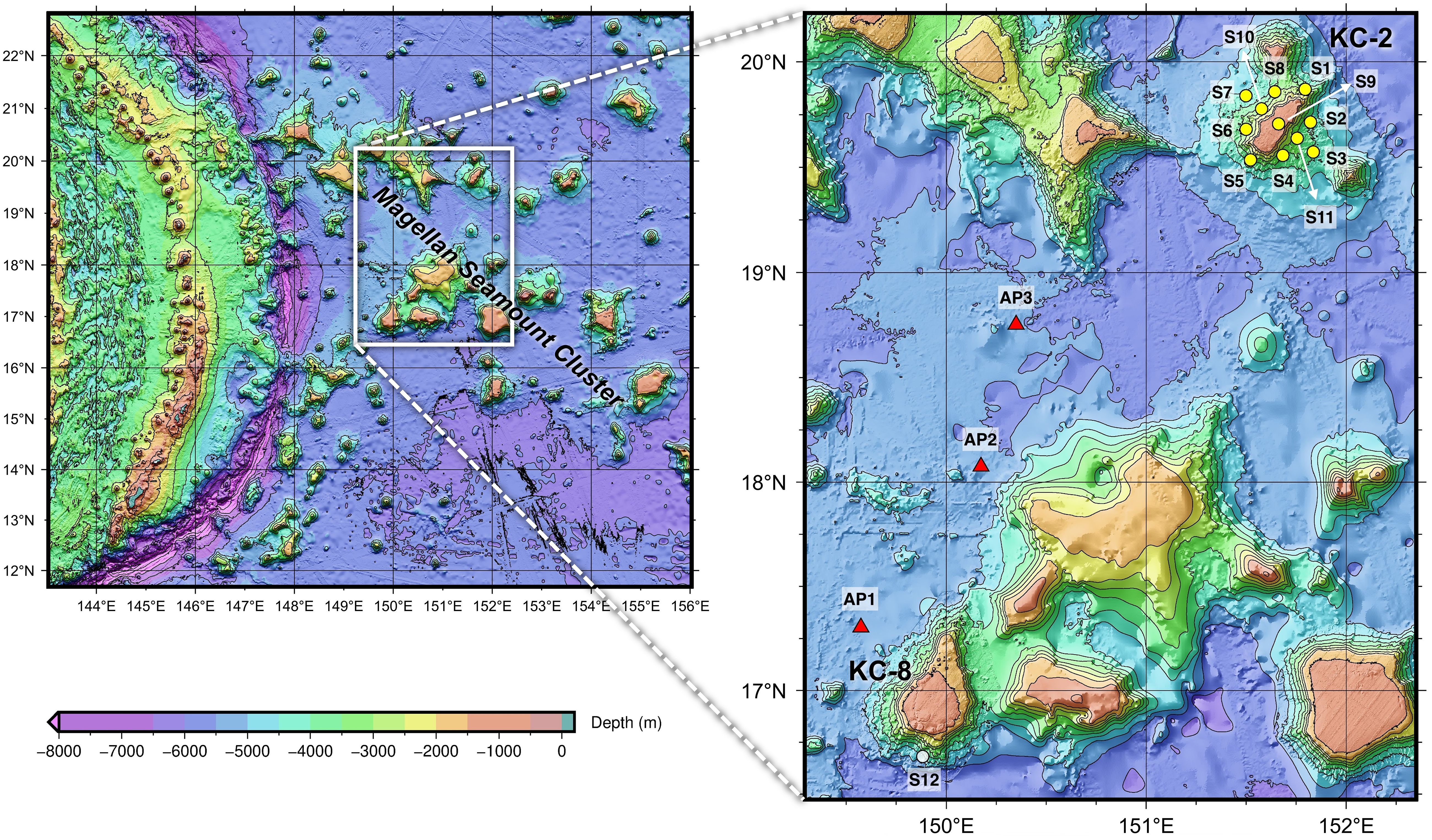
 A new study used modeling to suggest how and to what extent seamounts affect ocean mixing.
A new study used modeling to suggest how and to what extent seamounts affect ocean mixing.
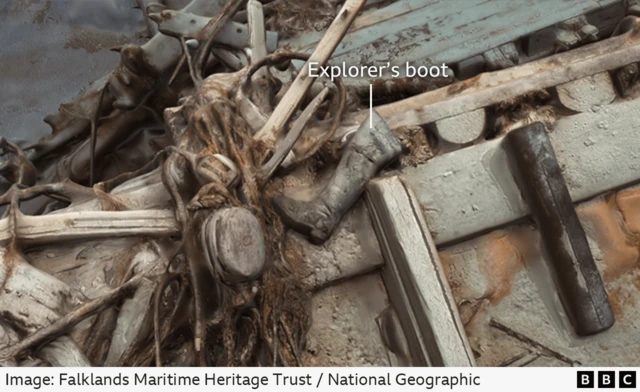
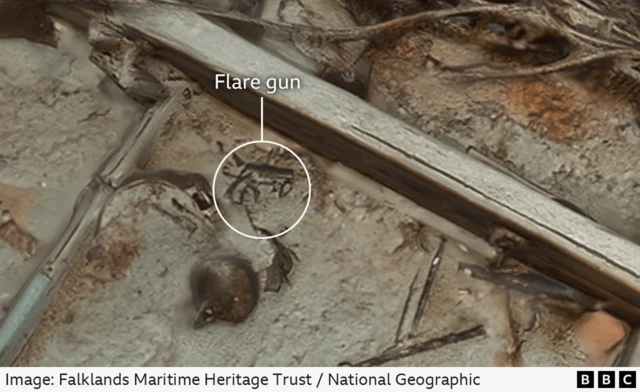




















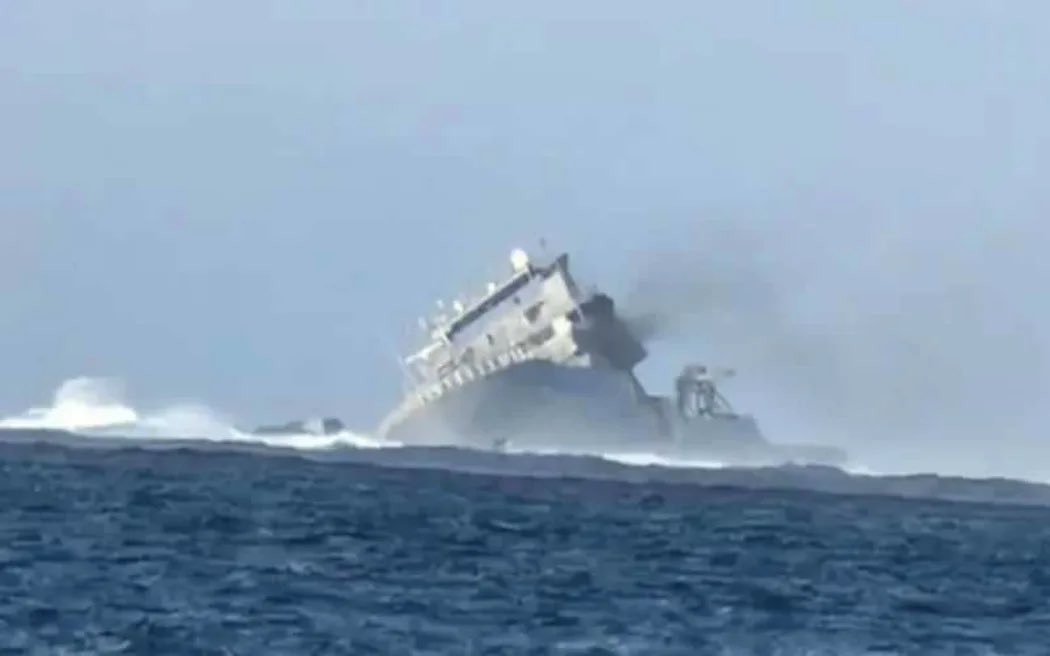






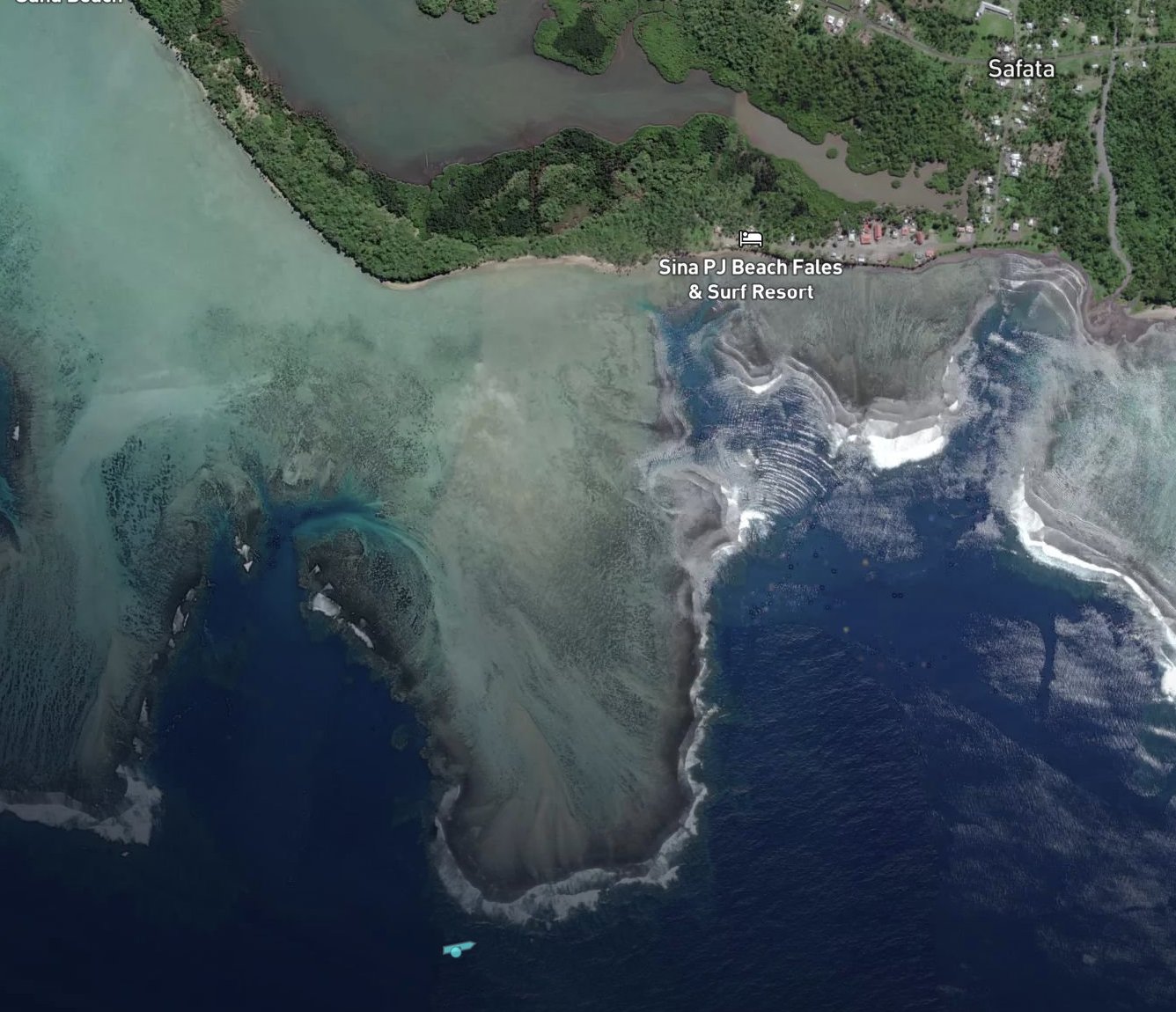


 HMNZS Manawanui commanding officer, Commander Yvonne Gray
HMNZS Manawanui commanding officer, Commander Yvonne Gray
 Crew members from HMNZS Manawanui arrive at RNZAF Base Auckland after being flown back from Samoa.
Crew members from HMNZS Manawanui arrive at RNZAF Base Auckland after being flown back from Samoa.


:focal(3163x2331:3164x2332)/https://tf-cmsv2-smithsonianmag-media.s3.amazonaws.com/filer_public/f9/96/f99660a5-7892-4cb0-93ba-51382537d990/jake_wilton_c.jpg)
/https://tf-cmsv2-smithsonianmag-media.s3.amazonaws.com/filer_public/97/67/97670928-1144-4c83-a8c9-8f3779529522/1_-_rafael_fernandez_caballero_c.jpeg)
/https://tf-cmsv2-smithsonianmag-media.s3.amazonaws.com/filer_public/17/fb/17fb1be2-ef54-4d0a-a07a-89948ce45156/2.jpg)
/https://tf-cmsv2-smithsonianmag-media.s3.amazonaws.com/filer_public/52/66/5266af49-636c-4b0a-8cfe-5d553bd4125f/1.jpeg) Baby plainfin midshipman fish, still attached to their yolk sacs.
Baby plainfin midshipman fish, still attached to their yolk sacs. /https://tf-cmsv2-smithsonianmag-media.s3.amazonaws.com/filer_public/60/fe/60fe036f-ae81-4464-a122-bdddcfde754e/1_-_zhang_xiang_2.jpeg)
/https://tf-cmsv2-smithsonianmag-media.s3.amazonaws.com/filer_public/0e/10/0e1040a9-e56e-4632-a11c-12197e67090d/1_-_tobias_friedrich_1_c.jpg)
/https://tf-cmsv2-smithsonianmag-media.s3.amazonaws.com/filer_public/3c/20/3c20f6d9-7a6d-46ce-a50f-35612aeac5cc/1_-_shane_gross_c.jpeg)
/https://tf-cmsv2-smithsonianmag-media.s3.amazonaws.com/filer_public/22/ea/22eacbe8-e876-485c-9e8a-b738b5a47042/1_-_frederik_brogaard_c.jpeg)
/https://tf-cmsv2-smithsonianmag-media.s3.amazonaws.com/filer_public/1a/e0/1ae018ee-3e5c-42ef-a3d1-4688b7c33d80/1_-_jacob_guy_c.jpeg)
/https://tf-cmsv2-smithsonianmag-media.s3.amazonaws.com/filer_public/23/09/2309cd85-abfd-4379-abfc-54eca2b76160/1_-_henley_spiers_1c.jpeg) Juvenile Munk’s devil rays are attracted by a green light on a boat, seemingly flying through the water in the Sea of Cortez, Baja California Sur, Mexico.
Juvenile Munk’s devil rays are attracted by a green light on a boat, seemingly flying through the water in the Sea of Cortez, Baja California Sur, Mexico. /https://tf-cmsv2-smithsonianmag-media.s3.amazonaws.com/filer_public/ae/28/ae28f933-5573-4b16-bfd8-8bca8b14f7c1/1_-_manuel_castellanos_raboso_c.jpeg)
/https://tf-cmsv2-smithsonianmag-media.s3.amazonaws.com/filer_public/f9/96/f99660a5-7892-4cb0-93ba-51382537d990/jake_wilton_c.jpg)
/https://tf-cmsv2-smithsonianmag-media.s3.amazonaws.com/filer_public/7e/4b/7e4b46ff-8d2d-435f-bdc0-7a65fdc134c4/1_1.jpeg)
/https://tf-cmsv2-smithsonianmag-media.s3.amazonaws.com/filer_public/08/b4/08b41fe2-0182-46d4-ba84-2954a285d971/daisuke_kurashima_c.jpeg)
/https://tf-cmsv2-smithsonianmag-media.s3.amazonaws.com/filer_public/c3/f7/c3f7318b-1fa0-410e-ac87-3d6b29e8b818/2_-_edwar_herreno_parra_c.jpeg) Beside the Sharkwater research vessel, which was initially used by the Japanese fishing fleet, swims a whale shark with its distinctive spotted pattern.
Beside the Sharkwater research vessel, which was initially used by the Japanese fishing fleet, swims a whale shark with its distinctive spotted pattern. /https://tf-cmsv2-smithsonianmag-media.s3.amazonaws.com/filer_public/64/e5/64e52d6d-cac7-4303-86a4-5059d3c8468a/kate_jonker_c.jpg)